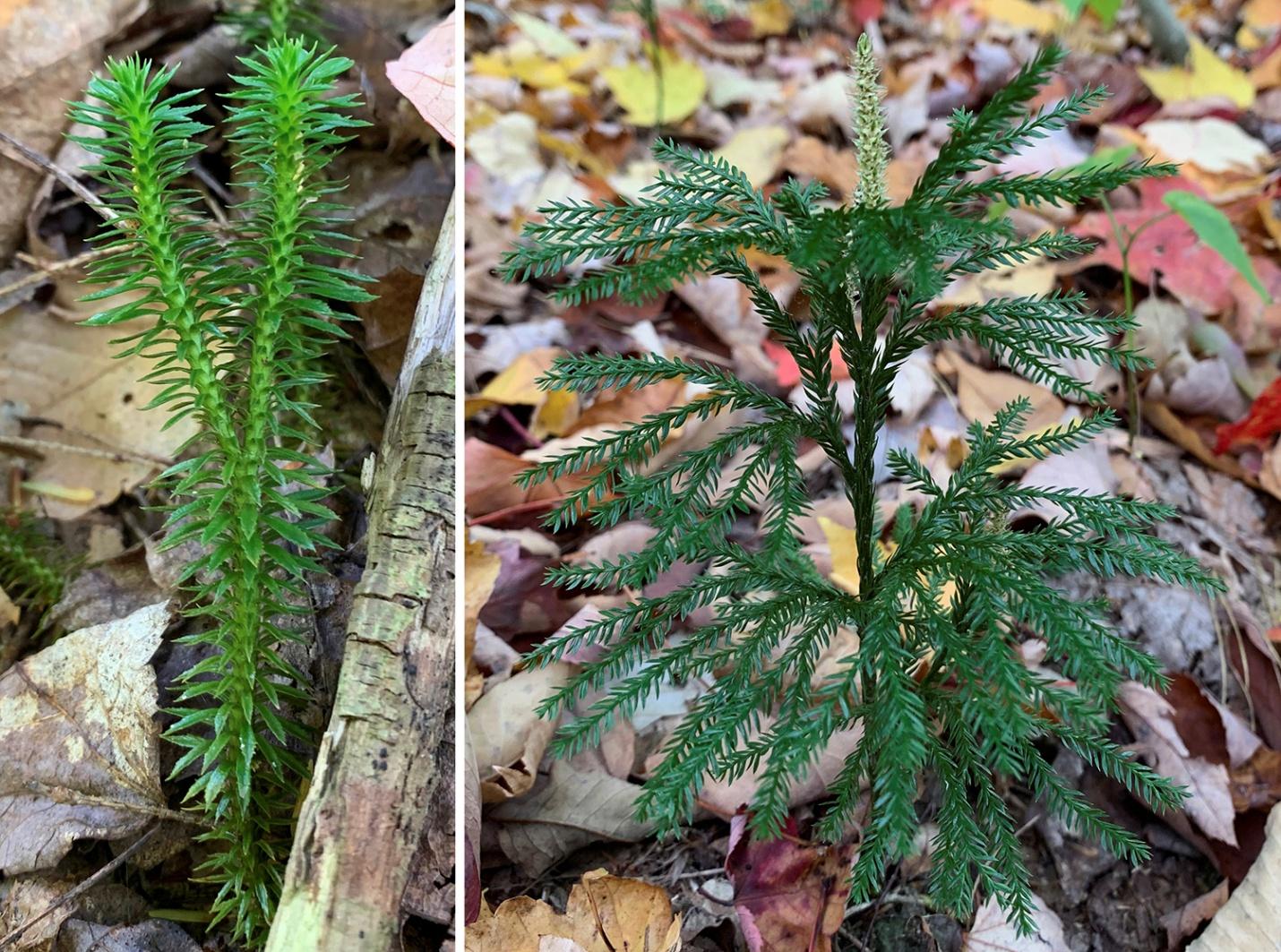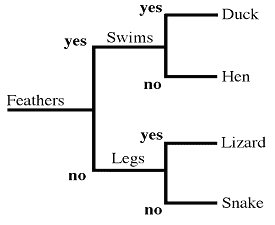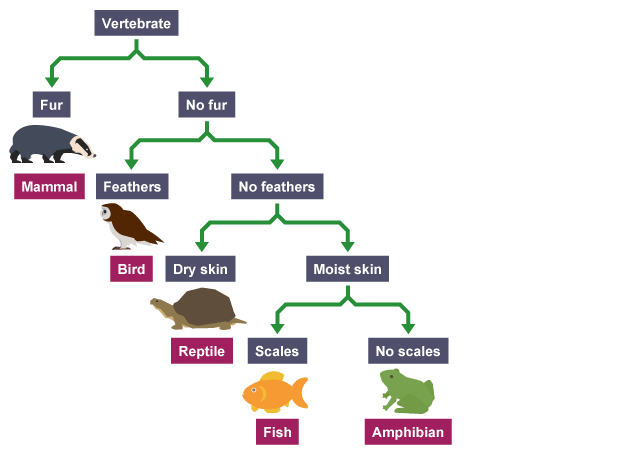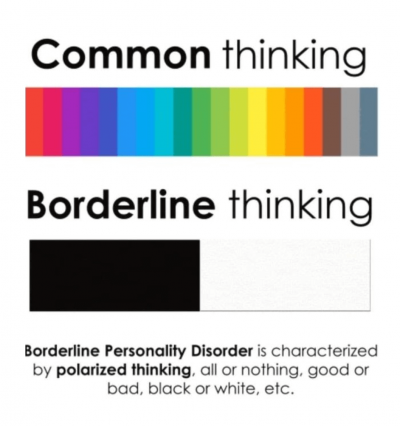
Dichotomous
adj., [daɪˈkɒt.ə.məs]
Definition: branching into two
Table of Contents
Several English words are widely used across different fields of Science. One such term is dichotomous. We often use this term in both biology and statistics. In this article, we will familiarize you with the word dichotomous, its meaning, as well as its usage in different contexts.
Dichotomous Definition
When asked, ‘what is dichotomous’, one can define and describe it in different contexts. Let’s put like on all of them.
- What is dichotomous (biology): In biology, the meaning of dichotomous is “two distinct and opposing biological organisms, features or theories”.
- Dichotomous branching: Dichotomous branching is a term used in plant biology (botany) to describe the splitting of the apical meristem into two separate and functioning axes.

Figure 1: The left plant is a firmoss (Huperzia lucidula) and the right plant is a clubmoss (Dendrolycopodium). While the former displays dichotomous branching, the latter displays pseudomonopodial branching. Image Credit: Digitalatlasofancientlife - Dichotomous question: Dichotomous questions are a type of closed-ended question that limit response options to only two choices. These questions are commonly presented in various formats, including Yes/No, Fair/Unfair, Pass/Fail, True/False, Accept/Reject and Agree/Disagree to survey participants.

Figure 2: Dichotomous questions have limited response options like Yes or No in the picture. Image Credit: Evolving Science - Dichotomous outcomes: Dichotomous outcome is a term used in statistics to describe a situation where the outcomes can only belong to two mutually exclusive categories.
- Dichotomous traits: Dichotomous trait is a term used in biology for a characteristic or feature of an organism that can be classified into only two distinct categories, without any intermediate values.
- Dichotomous definition statistics: The term dichotomous is used in statistics to describe a variable or an outcome that can take on only one of two possible values, typically represented as 0 or 1.
- Dichotomous key definition science: A dichotomous key is a tool used by scientists, researchers, and naturalists to identify and classify organisms based on their observable characteristics. It consists of a series of paired statements or questions that allow the user to narrow down the possible identities of an unknown organism by selecting between two alternative and opposing options. Each pair of options leads to a new pair of options, ultimately resulting in the identification of the organism. Dichotomous keys can be used for a wide range of living organisms, including plants, animals, fungi, and bacteria, and are commonly used in fields such as biology, ecology, and environmental science.

Figure 3: Dichotomous keys are widely used in biology for the classification of organisms based on important “characters” with “two character states (traits)”. Image Credit: Evolving Science - Dichotomous thinking: When asked to define dichotomous thinking, one can elaborate it as a cognitive pattern of viewing the world in terms of only two opposing and exclusive categories, without recognizing any gray areas or nuances in between. For this reason, it is also referred to as “black-and-white thinking”.In dichotomous thinking, people tend to categorize everything as either good or bad, right or wrong, with no in-between options or shades of meaning.
- Pros of dichotomous thinking: Keeps objectivity and rationality in decision making
- Cons of dichotomous thinking” Tends to be limiting and can lead to oversimplified and inaccurate judgments, as it doesn’t take into account the complexity and diversity of human experience. It can also be problematic in many situations, such as in interpersonal relationships, politics, and social issues. It can also contribute to anxiety and depression, as individuals may experience feelings of helplessness and despair when they perceive themselves as being stuck in a binary, all-or-nothing framework.

Figure 4: Borderline personality disorder is associated with dichotomous thinking. Image Credit: Pinterest
- Dichotomous variable: When asked to define the dichotomous variable, one can elaborate on it as a type of categorical variable that can take on only one of two possible values or categories. These two categories are usually mutually exclusive and collectively exhaustive, meaning that they don’t overlap and they cover all possible outcomes. Dichotomous variables are often represented using binary codes, such as 0 or 1, true or false, yes or no, or present or absent. Dichotomous variables are widely used in statistical analysis, particularly in binary logistic regression models.
Etymology
What does dichotomy mean? Let’s understand the etymology of the term “dichotomy”. Dichotomy is a late 16th-century word that derives from two words; the Greek word “dikhotomia” and an English word “tomy”. The former is derived from another two Greek words; “dikho” meaning ‘in two parts’ and “tomia” meaning cutting.
Dichotomy thus explains how two things or ideas or individuals or characters possess strike differences from each other. Dichotomous is the state of dichotomy.
Synonyms
Some of the synonyms of dichotomous are:
- Bipartite
- Forked
- Divided
- Branched
- Bifurcated
- Bifid
Watch this vid about the dichotomous key:
Dichotomous refers to a situation or trait with only two distinct and mutually exclusive options or outcomes. It is commonly used in biology to describe traits that can be classified into only two categories, such as dominant or recessive, male or female, or alive or dead.
Dichotomous Example
- Examples of dichotomous variables include gender (male or female), smoker (yes or no), voter (yes or no), and disease status (present or absent).
- Examples of dichotomous branching in plants include:
- Ginkgo biloba: This tree exhibits dichotomous branching in its leaves, with each leaf dividing into two lobes.

Figure 5: Dichotomous branching in the leaf of Ginkgo biloba. Image Credit: Berkeley University - Liverworts: These small, nonvascular plants have dichotomous branching in their thalli, which are the flat, leaf-like structures that make up their bodies.

Figure 6: Dichotomous branching in a liverwort, Marchantia emarginata (gametophytes). Image Credit: Boon-Chuan Ho - Acacias: Some species of Acacia trees have dichotomous branching in their stems, resulting in a Y-shaped growth pattern.
- Dipterocarps: These tropical trees exhibit dichotomous branching in their trunks, with each trunk dividing into two at regular intervals.
- Bryophytes: Mosses and other bryophytes often display dichotomous branching in their gametophyte structures, which produce reproductive cells.
- Ginkgo biloba: This tree exhibits dichotomous branching in its leaves, with each leaf dividing into two lobes.
Featured!
Mendel, Laws of Inheritance and Dichotomous Traits of the Pea Plant
Gregor Mendel, an Augustinian monk, is widely known as the father of genetics for his groundbreaking work on the laws of inheritance. He chose to study pea plants for his experiments because of their unique features, particularly their dichotomous traits.
Dichotomous traits are those characteristics that exist in only two character states or traits, such as tall or short plants, yellow or green seeds, and round or wrinkled seeds.
The pea plant’s dichotomous traits made them ideal for Mendel’s work as they allowed him to isolate and analyze the effects of individual traits with ease.
By studying pea plants with distinct traits, he was able to observe the patterns of inheritance, which helped him formulate the laws of segregation and independent assortment. Moreover, pea plants are self-pollinating, which means that they can fertilize themselves without the need for a mate. This trait allowed Mendel to control the crosses and ensured that he could accurately predict the outcomes of his experiments. Additionally, pea plants have a short life cycle, making it possible for them to conduct multiple experiments in a short period.
In conclusion, Mendel’s choice of pea plants with dichotomous traits was a wise decision. The plants’ unique features allowed him to isolate and analyze individual traits and develop a comprehensive understanding of the laws of inheritance. His work with pea plants laid the foundation for modern genetics and has significant implications in fields such as medicine, agriculture, and biotechnology.

Take the Dichotomous – Biology Quiz!
References
- Gola, E. M. (2014). Dichotomous branching: The plant form and integrity upon the apical meristem bifurcation. Frontiers in Plant Science, 5. https://doi.org/10.3389/fpls.2014.00263
- Ho, B. C. (2013). The liverwort genus Marchantia L.(Marchantiophyta: Marchantiopsida) in Singapore, with a new species record. Nature in Singapore, 6, 187-190.
- Laird, N. M., Lange, C., Laird, N. M., & Lange, C. (2011). Principles of inheritance: Mendel’s laws and genetic models. The Fundamentals of Modern Statistical Genetics, 15-30.
©BiologyOnline.com. Content provided and moderated by Biology Online Editors.








